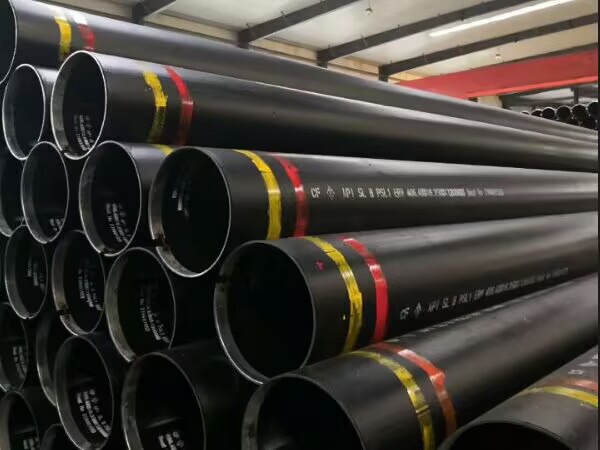What is ERW steel pipe?
Electric Resistance Welded Steel Pipe (ERW) is a steel pipe manufactured by a resistance welding process. The steel pipe is rolled into a round steel plate or steel strip, and then the contact surface of the pipe is melted by the heat of the high-frequency current, and the welding without filling metal is realized under the action of pressure, thus forming the longitudinal weld of the pipe. ERW steel pipe has efficient production speed, excellent surface quality and uniform wall thickness, so it is widely used in a variety of industrial fields.

ERW steel pipe production process
Coil forming: Through the equipment to gradually curl the steel plate or steel strip into a round or other cross-section shape of the tube blank.
High-frequency welding: The use of high-frequency current in the edge of the pipe to generate resistance heat, so that the contact surface melting, while applying pressure to combine it to form a strong weld.
Remove welds: Internal and external welds are usually trimmed or heat treated to make them smooth and free of bumps.
Sizing and straightening: Straightening and sizing the welded steel pipe to ensure that the size meets the standard requirements.
Quality testing: Non-destructive testing (such as ultrasonic testing) and hydraulic testing to ensure the quality of the weld and the bearing capacity of the pipe.
The main characteristics of ERW steel pipe
High production efficiency: ERW steel pipe production speed, and relatively low cost, suitable for mass manufacturing.
Excellent surface quality: After weld treatment, the surface is smooth and easy to further processing and coating.
Uniform wall thickness: Compared with other types of steel pipes, ERW steel pipes have more uniform wall thickness and more stable performance.
Good mechanical properties: the welding process is advanced, the weld strength is basically the same as the pipe body, and can meet the requirements of general pressure and structural applications.
A variety of specifications: can produce a variety of diameters and wall thickness of the steel pipe, to meet the needs of different scenes.
The difference between ERW steel pipe and other steel pipes
With seamless steel pipe:
Manufacturing process: Seamless steel pipe is made of whole billet by heating perforation, no weld; ERW steel pipe is made by welding process.
Performance: Seamless steel pipe is suitable for high temperature and high pressure occasions, while ERW steel pipe is more suitable for low pressure and normal temperature environment.
Cost: ERW steel pipe production cost is lower, the price is more competitive.
With spiral welded pipe (SSAW) :
Weld direction: The weld of ERW steel pipe is longitudinal, while the weld of spiral welded pipe is spiral.
Use: ERW steel pipe is more suitable for small and medium diameter pipes, and spiral welded pipes are usually used for large diameter and long distance transmission pipes.
ERW steel pipe application field
Fluid transport: medium and low pressure pipeline system for water, oil, natural gas and other liquids and gases.
Structural support: widely used in building structures and mechanical support, such as pillars in steel structure engineering.
Power engineering: as a component of cable protection tubes and line towers.
Automotive industry: Used to manufacture automobile transmission shaft, exhaust pipe and other parts.
Oil and gas industry: Used in medium and low pressure transmission pipelines and oil well pipes.
Summary of advantages
Cost-effective: Compared with seamless steel pipes, ERW steel pipes are cheaper, but can meet the needs of most low-pressure occasions.
Wide range of specifications: steel pipes with diameters from 1/2 inch to 24 inches can be produced for a wide range of applications.
Environmental protection and high efficiency: The production process consumes less energy and conforms to the concept of green production.
Conclusion:
Because of its efficient production method, economic cost and good performance, ERW steel pipe has become one of the important choices for industrial and civil pipelines, especially in low and medium pressure occasions and structural uses.
